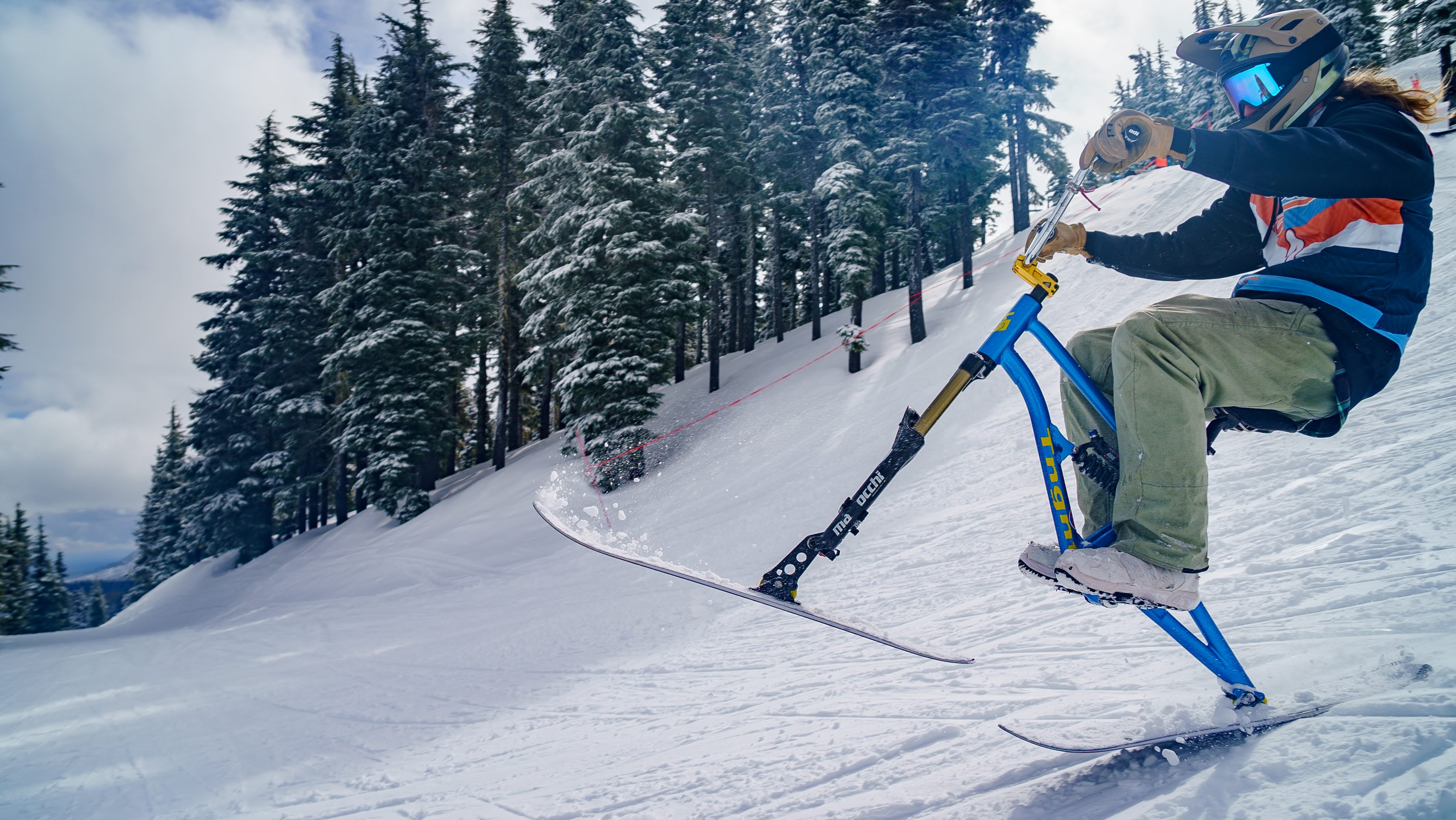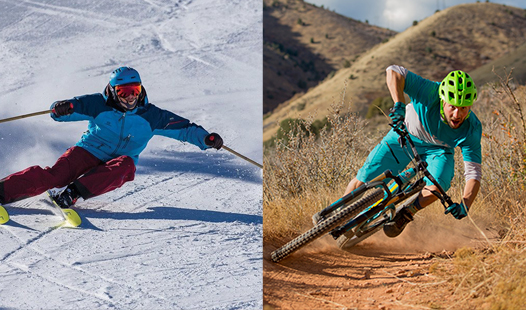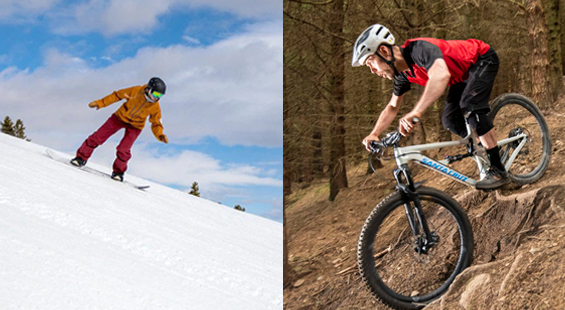How Snow Sports translate to MTB and Cycling
We’ve reached that time of the year in Salt Lake when riding bikes outside is little more than a pipe dream. Good news is the snow is great and there’s plenty of opportunity to get out in the Wasatch for some skiing and riding. Did you know that these winter activities can actually help your overall cycling and mountain bike skills? Cross-training is often used in many sports to help enhance overall athletic ability, and cycling is no exception. We’re gonna dive into some of the ways that skiing and snowboarding can help translate into your skills on the bike for the upcoming season.
Let me start off by saying I’m not a doctor, nor am I a physical therapist, athletic trainer, nor anything related specifically to physiology for that matter. I’m just a guy who loves riding bikes who wants to help you get the most of your winter months, so feel free to take what I say with a grain of salt. So if you’re looking for advice specifically geared towards helping you excel in cycling competition, I suggest seeking out a professional.
It’s winter and it’s cold outside. The last thing you want to do is bundle up to hop on a bike and ride, not to mention the chance of slipping on ice while you’re riding. You could ride a trainer or stationary bike, but there’s only so much fun you can have sitting and pedaling in one place. So why not try skiing and snowboarding? There are some obvious aspects of these sports that translate well into cycling - namely physical fitness, strength, and cardiovascular endurance. Though snow sports do generally use different muscle groups compared to those required on a bike, they can help strengthen your weaknesses and make you an overall better athlete. Not only can these sports keep you in shape, they can also leave you with gains you would not have obtained from cycling alone.
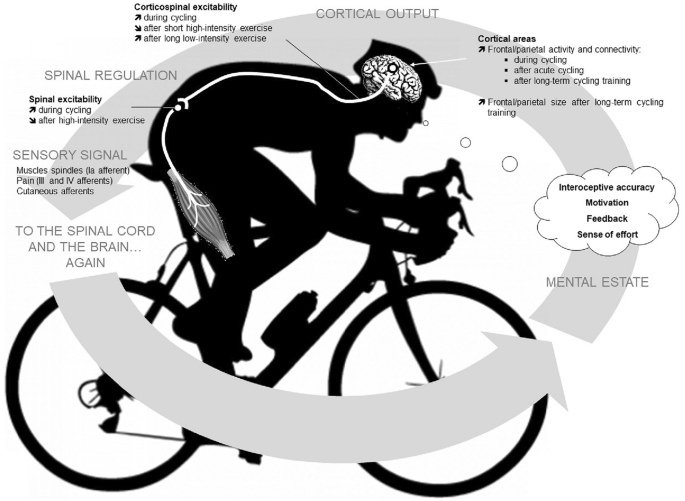
The general neural process involved in cycling exercise. Image retrieved from Springer Link
A large part of these gains come in the way of augmented balance and coordination. It is undeniable that cycling requires balance as you’re riding on two wheels, just as skiing/snowboarding require you to stay upright. Training these neural pathways on skis or a board in the offseason help the brain tell your body how to configure itself and keep you balanced, just as it would if you were on a bike. Moreover, skiing forces quick decision-making and reactions as you are generally moving downhill navigating through different obstacles. This same process is used when riding down the road or on a trail.
Now let’s talk about some cycling-specific techniques that you can practice on your skis and snowboard:
Cornering
Moving side-to-side and from turn to turn on skis or a board feels a lot like going around corners on a bike. Both activities deal with having proper weight distribution. You’ll want most of your weight on the outside foot, whether that be on edges or on a pedal. This will help you achieve better traction, speed, and control throughout the turn.
Descending Steep Terrain
You’ve probably heard that you should lean forward into your ski boots on skis or weight your front foot on a snowboard to maintain control in steeper terrain. The same goes for mountain biking. You’ll want to have your knees over toes to put you in a better position on steep descents. Doing this will help you have more control of the bike and help you react more quickly to terrain. Remember: Attack! Don’t lean back!
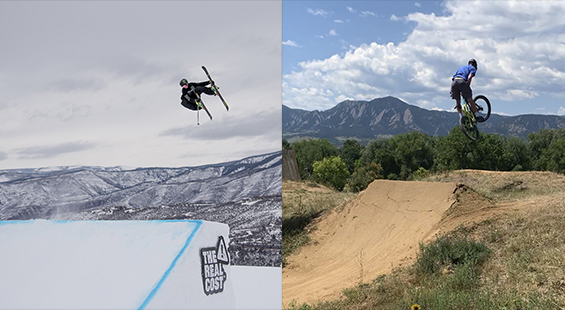 Image retrieved from https://forecastski.com/x-games-mens-slopestyle-finals/
Image retrieved from https://forecastski.com/x-games-mens-slopestyle-finals/ Jumping
This is a bit more obvious than the first two, but jumping on skis/snowboard is very similar to doing so on a bike. As you come into the takeoff, you’ll want to load your legs by bending your knees and standing in a strong athletic position. As you approach the lip, extend your legs to take flight.
Lastly, I’d be remiss without mentioning the most translatable activity of them all - ski biking. Ski biking is more or less exactly as it sounds, it’s a mountain bike with skis in place of the wheels. I won’t get too into this as it was covered in a previous blog post, but many aspects of steering and handling a ski bike are very similar to riding on two wheels. If you want to give one a try, check out our demo fleet of Tngnt ski bikes.
